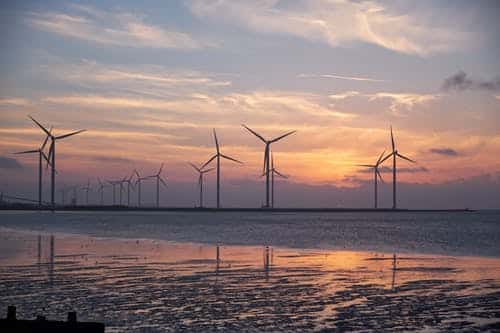U.S. Sets Floating Offshore Wind Energy Goal of 15 Gigawatts by 2035

The Biden administration on Sept. 15 announced that it will aim to deploy 15 gigawatts of floating offshore wind capacity by 2035 and create a “Floating Offshore Wind Shot” to reduce floating technology costs by over 70 percent by 2035 to $45 per megawatt hour. The initiative targets deep-water lease areas to reach the 15-gigawatt goal. Last year, the administration set a goal of deploying 30 gigawatts of offshore wind by 2030, which will be met mainly by fixed-bottom technology.
The initiative is expected to position the U.S. to lead in floating offshore wind technology. Globally, just 0.1 gigawatts of floating offshore wind have been deployed to date, compared with more than 50 gigawatts of fixed-bottom offshore wind capacity, according to a White House fact sheet.
The Floating Offshore Wind Shot is part of the Energy Earthshot program that aims to accelerate breakthroughs in engineering, manufacturing, and other innovation areas. The initiative is led by the Departments of Energy, Interior, Commerce, and Transportation. The Energy Department’s National Science Foundation will collaborate on research and workforce development.
Reaching the $45 per megawatt hour by 2035 cost target will require a focus on engineering, manufacturing, and continued increases in offshore wind turbine capacity, while federal and state agencies continue collaborating on domestic supply chain and transmission infrastructure needs for floating and fixed-bottom offshore wind, according to the fact sheet.
The Bureau of Ocean Energy Management will advance wind lease areas for projects in deeper waters to fulfill the objective, beginning with a previously announced auction for territory off the California coast before the year’s end. The U.S. Energy Department will also invest $50 million into research, development, and demonstration projects, with portions of the funding from last year’s infrastructure bill. That research will touch on various aspects of the industry, ranging from utility-scale projects to port upgrades to wildlife protection measures.
EnerKnol Pulses like this one are powered by the EnerKnol Platform—the first comprehensive database for real-time energy policy tracking. Sign up for a free trial below for access to key regulatory data and deep industry insights across the energy spectrum.
ACCESS FREE TRIAL